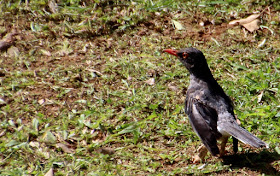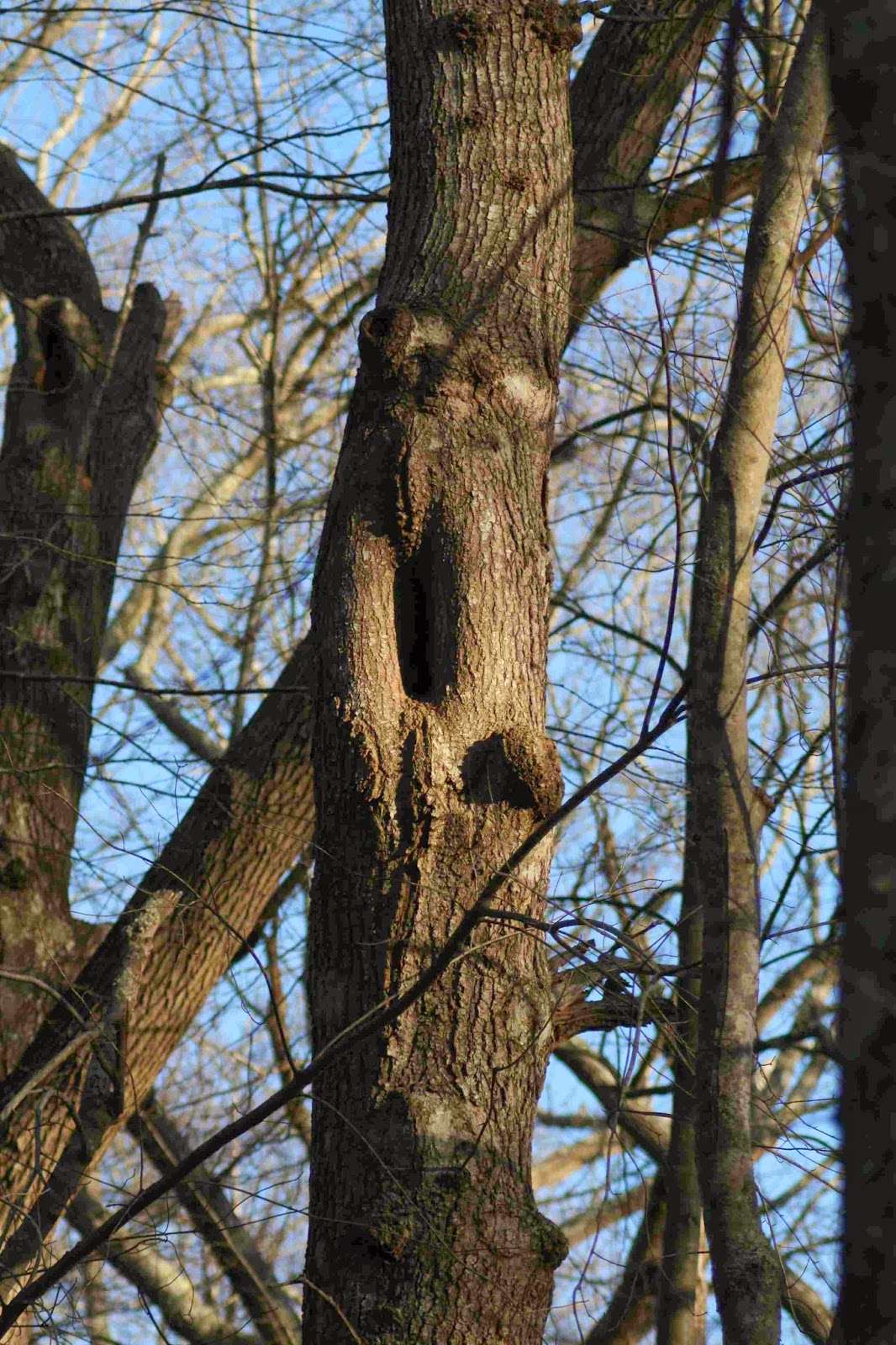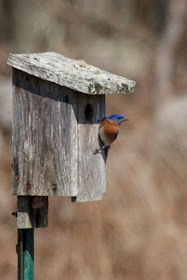By Beth Sullivan
We were lucky enough to escape the
day before “the Blizzard” to fly to warmer, greener places. I
only felt a little guilty leaving while I knew people here would be
dealing with lots of snow and cold and wind, but just a little.
We were in Puerto Rico. We had the
opportunity to stay on the north coast, but far enough east to be
away from the hub of the cities. We had decided to spend as much
time relaxing as possible, but that included birding and nature study
which for me is most relaxing. We are at the vernal equinox, when the
length of days and nights are equal, with days getting longer, and
this spurs many changes in nature. Everywhere.
 |
| It was easy to be distracted by the beautiful scenery. |
I think I have been watching birds
forever, beginning with my little yellow parakeet I had as a baby.
But I became a birder as my own kids got older and we had the time to
take vacations with them and really began to study birds in their
native habitats. Binoculars, bird books, and now Apps are essentials
on any trip. A camera is great but a birder knows that certain birds
never sit still long enough to be seen clearly, never mind
photographed.
Habitat is key
One of the first lessons a birder
learns is about habitat and distribution: certain types of birds like
certain habitats. Anywhere. And certain birds are not found in
certain places, ever. So a warbler is going to enjoy trees and
brush, sparrows often like to find seeds on the ground, ducks and
herons and egrets like water, and shorebirds like seashores. It may
be a bit of generalization and is never set in stone, but it helps.
Looking at the range maps helps you narrow it down too. A bird you
are investigating may never be found in your present area, but
another similar bird may be abundant. It becomes easier to narrow
down the choices.
 |
| Royal Turns act just like our local Turns. |
Along the coast it was hard to focus
on the birds because the water and scenery were so beautiful. We
watched terns diving for small bait fish, and while they were bigger
Royal Terns, they looked and acted just like the terns (Common, Least
and Roseate) that we have here. Along the coast in Luquillo and
Fajardo there were also Magnificent Frigate birds and Brown Pelicans.
Those were easy to identify. In Puerto Rico, osprey are considered
endangered. I expected to see a number of winter visitors, but we
only saw two. They do not spend much time there, but their behavior
is unmistakable. I wished them safe journeys northward as they should
be arriving here soon.
 |
| Magnificent Frigatebird |
Hiking into the rain forest of El
Yunque was definitely the highlight. We spent hours over several days
exploring side trails, dense rain forest, open areas, and water
falls. Interestingly many of the best birds were actually closer to
places where there were openings for parking or picnicking. Just like
here, birds of certain types will find different niches and like
edges that are sunny to find flowers for nectar and insects and
seeds. It may also be that it is a lot easier to see a bird in an
opening as opposed to way up high overhead where you just know he is
singing, but cannot be seen for all the dense greenery. The leaves
are so large they could hide an Eagle.
 |
| The rain forest canopy is a distinct world and the vegetation hides countless birds. |
One bird we enjoyed early in our
hike challenged our identification skills. When we first spied it, it
definitely acted like a Robin. After watching it for a bit, we turned
to the books. By knowing where to look-Thrush family with Robins-we
could narrow it down. While we noted its red legs, its beak was most
outstandingly red, and there was no mistaking it as a Red Legged
Thrush.
 |
| The Red-legged Thrush acts just like our Robin. |
There were Flycatchers all over.
They were easy to sort into a family group, but like Flycatchers
here, many were impossible to identify without hearing their song.
We were able to identify several.
In the Mangrove swamp
A little yellow bird zipped in front
of us. I thought it reminded me of our Yellow Warbler at home, and
sure enough, the book shows range and habitat of the Yellow Warbler
and describes it as being a common resident of Mangrove swamps.
That was easy.
Doves act like doves in all places.
We just had to sort out the species.
 |
| This Zanaida Dove mimics our Mourning Dove. |
Deep in the
forest we could hear a repetitive song. We knew it was close by, but
we couldn’t find the singer. Finally it moved. The silhouette
seemed familiar, good size, longish beak, speckled chest, but very
strange light eyes. ID : Pearly Eyed Thrasher looking and acting much
like our Brown Thrasher.
 |
| Pearly-eyed Thrasher. |
There were so many more, some very
unique to Puerto Rico.
All these birds were beginning their
breeding season, singing with the sun, posturing for mates,
collecting material for nests. Some things don’t change no matter
where you are looking for birds.
Photographs by Beth Sullivan.





















